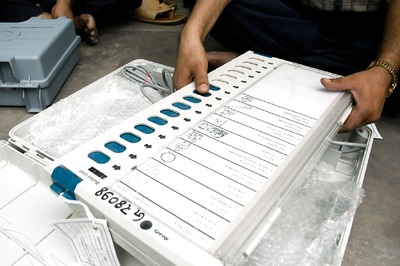
views
Tokyo: Radioactive groundwater at the crippled Fukushima nuclear plant has risen to levels above a barrier being built to contain it, highlighting the risk of an increasing amount of contaminated water reaching the sea, Japanese media reported on Saturday.
The Asahi newspaper, citing data from a Friday meeting of a task force working on the Fukushima clean-up at Japan's nuclear regulator, estimated that the contaminated water could swell to the ground surface within three weeks.
The latest revelation underscores the hurdles facing Tokyo Electric Power (TEPCO) (9501.T) 2-1/2 years after a massive earthquake and tsunami destroyed the Fukushima plant, triggering the world's worst nuclear disaster since Chernobyl.
One of Tepco's biggest challenges is trying to contain radioactive water that cools the reactors as it mixes with some 400 tonnes of fresh groundwater pouring into the plant daily. Tepco has been injecting a chemical into the ground to build barriers to contain the groundwater. But the method is only effective in solidifying the ground from 1.8 meters below the surface, whereas data from test wells shows the contaminated water has risen to one metre below the surface, the Asahi said.
No one at Tepco or the regulator, the Nuclear Regulation Authority (NRA), could be reached for comment. At Friday's meeting a Tepco official said equipment to pump out the water should be ready in late August, the Asahi said.
The Asahi noted that Tepco would need to pump out about 100 tonnes of water each day to prevent leakage into the ocean but that it was not clear where the water would be stored. More than 85 per cent of its 380,000 tonnes of storage capacity is already filled, and Tepco has acknowledged it could run out of space. Last month Tepco reversed months of denials and acknowledged that radioactive water has been leaking into the ocean.



















Comments
0 comment